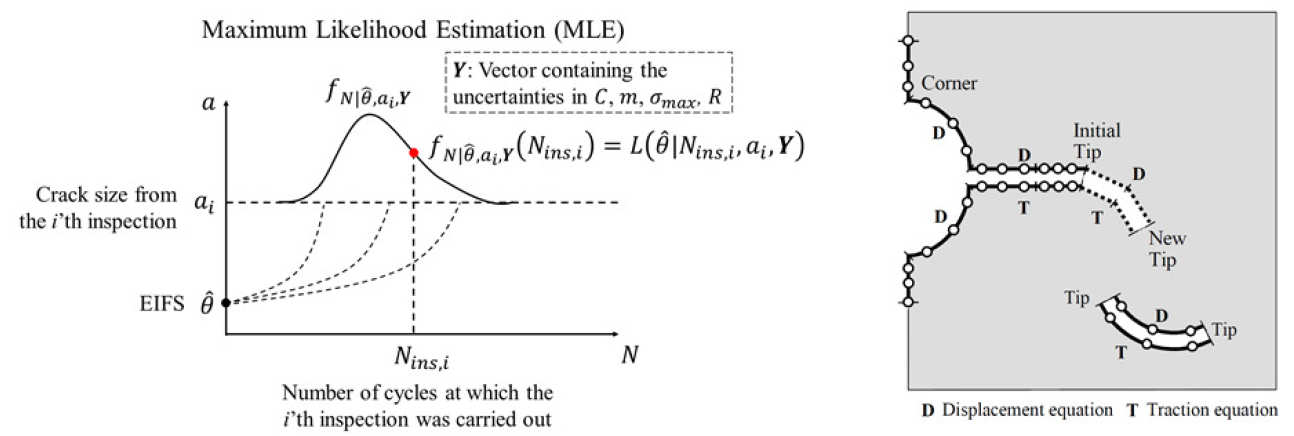An ideal means to determine fatigue life would be to grow a crack from an actual initial flaw size (IFS) to a maximum permissible crack size with the use of a crack growth model accurate for very short cracks. However, this is difficult since the IFS would be smaller than the minimum detectable flaw size, and so too small to determine. In addition, the structure’s microstructure is likely to contain many small flaws, and determining which of these is likely to become a crack is difficult. One approach is the use of an equivalent initial flaw size (EIFS). The EIFS provides a helpful starting point for determining the fatigue life of the structure.

Our group has developed a new methodology for the statistical inference of the Equivalent Initial Flaw Size distribution (EIFSD) using the Dual Boundary Element Method (DBEM). As part of the inference, Bayesian updating is used to calibrate the EIFS based on data obtained from simulated routine inspections of a structural component from a fleet of aircraft. An incremental crack growth procedure making use of the DBEM is employed for the modelling of the simultaneous growth of cracks in the structure due to fatigue. Multi-fidelity modelling is used to create surrogate models that act in place of the DBEM model for the expensive Monte Carlo sampling procedure required for the statistical inference of the EIFSD. The proposed methodology is applied to a numerical example featuring a long fuselage lap joint splice in presence of multiple site damage (MSD). Results show that the EIFSD can be accurately estimated with data from 50 inspections.
